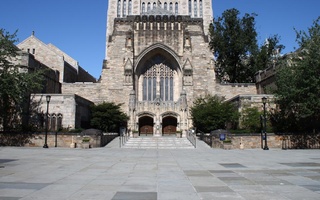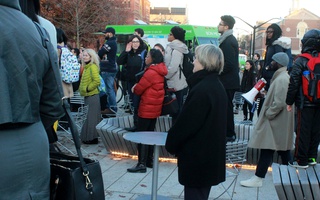Over the past few weeks, students of color at colleges across the country—from Ithaca to Yale to the University of Missouri to Harvard Wednesday—have organized protests against racial inequality on college campuses. Broadly, administrators should do their best to listen to these students’ concerns and respond to them. Over 150 years after the abolition of slavery and over 50 years after the signing of the Civil Rights Act of 1964, racial bias still manifests in ways both implicit and explicit.
Explicit racism has run rampant in recent weeks at the University of Missouri, where we understand the impetus behind the successful calls to remove the university's president. The overt racism present on Mizzou’s campus—which included graffiti of a swastika and cotton balls left in front of a black cultural center—is distressing and unacceptable at any institution of learning. Students at Mizzou were right to stand up and speak out about the incidents and the administration’s inadequate responses to them.
Yet Mizzou is a specific case among many. Each instance of racial tension should be evaluated in its own context, just as the ways in which students choose to protest these inequities must also undergo scrutiny. Explicit racism like the kind we've seen at Mizzou is easy to recognize, but implicit racism is harder to diagnose. The possibility of confusing opposing opinions for something far more insidious means that in many cases—as at Yale—calling for the resignation of administrators is a disproportionate and unproductive response.
Certainly, it's worth assessing where our campuses are on issues of race and where we can do better. At Harvard, minorities still represent only 19 percent of the FAS faculty, and students of color still feel like their voices are not always heard by their peers or by the administration. These are problems we should notice and discuss but through measured discourse that identifies the real issues at hand and works to solve them. Some of these issues exist on campus. Others, from mass incarceration to racial profiling to achievement and income gaps, plague the country at large.
Students at Harvard and around the nation continue are uniquely poised to have discussions now that have too long been left off the table. With well-targeted efforts attuned to each campus’s and each controversy’s circumstances, they can succeed in setting their institutions on a trajectory towards a more just and more inclusive future.
Read more in Opinion
Smile, SweetheartRecommended Articles
-
NO RACISMTo The Editors of the Summer News: For the past 2 summers, I have been doing research in Biochemistry at
-
The Mail NOT 'SDS'ERTo the Editors of the CRIMSON: I was angry at discovering my picture on the front page of Wednesday's CRIMSON
-
NYC Health Commissioner Talks Racial Inequalities in HealthThe commissioner of the New York City Department of Health and Mental Hygiene argued that public health professionals have an important role to play in addressing systemic racial inequality.
-
 Students Weigh In on Protests at Yale and Mizzou
Students Weigh In on Protests at Yale and Mizzou -
 Students Rally in Support of Black Activists at Peer Schools
Students Rally in Support of Black Activists at Peer Schools













